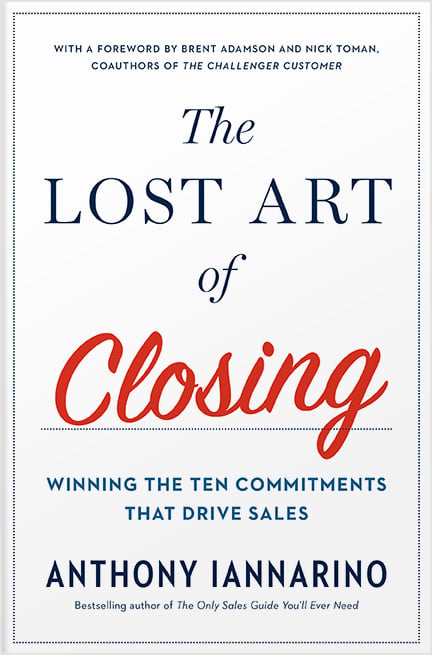The Gist:
- New leads are not better than old leads.
- Recency bias will cause you to believe that a new lead will be easier to convert, even though this isn’t true.
- It is a mistake to believe that recent means better when all leads share common traits, one being helping clients on their buyer’s journey.
In Pee-wee’s Big Adventure, Pee-wee Herman is briefing his friends on his missing bicycle. At a key moment, he exhorts them that when “your mind plays tricks on you, you play tricks back.” One of the tricks that your mind plays on you is recency bias, a false cognitive bias that causes you to prefer something more recent over something historic. In sales, recency bias often influences how we evaluate leads.
It’s unlikely that a more recent lead is automatically better than an older lead, or even than a target that is already locked into a contract with your competitor—even if the new contact devoted two minutes to filling out a form on your website. The evidence shows that it is a good practice to respond to a lead in something less than an hour, but there is no evidence that today’s Glenn Ross leads are intrinsically better than yesterday’s Glenn Ross leads.


Why You Want to Believe a New Lead Is Better
Sometimes recency bias can help you, like when you’re deciding whether to eat some, ahem, vintage kung pao chicken from the back of your fridge. But if you find yourself gravitating toward new sales leads just because they’re new, it’s probably because a part of you believes that newer leads will be easier to close.
Your mind plays tricks on you by convincing you that a brand-new lead indicates that the contact is compelled to change, that they are ready to buy, and that you have a greater chance of winning their business. Occasionally, this is true. But in more cases than not, you’ll still need to sell.
Compelled to Change, or Not So Much
It’s easy to assume that a new contact is, at that moment, more compelled to change and better positioned to take immediate action. You prioritize what is new with scant evidence of that contact’s compulsion to change, let along how compelled an older lead might be. But in reality, you cannot determine how compelled any prospective client is to change at any time without speaking to them.
Andy Paul would tell you that every lead is like a scratch-off lottery ticket. You have to scratch it to see if you’ve won. (No, please don’t literally scratch your clients.) The next ticket you buy doesn’t in any way improve your chances of winning, even though the lottery ticket is brand new. Recency isn’t evidence of a winner.


Readiness to Buy
Much of my sales career took place in a highly commoditized industry, where you could expect a new lead about as often as a Halley’s Comet sighting or perhaps a new Game of Thrones novel. I chafe at the very idea that one should expect a lead to be “ready to buy.” Why would clients who are ready to buy even need to engage with a salesperson?
In fact, let me take that one step further. When what you sell is simple enough that the client can buy without any help, you don’t need salespeople; you just need effective marketing. Starbucks baristas might persuade you to add a shot of espresso to your liquid cupcake, but it’s Marketing’s job to get you in the door. Many of the product-led growth companies struggle when they mistake marketing for sales, especially when their growth depends on winning enterprise-level clients.
You are better off believing that any lead, regardless of when you obtain it, is anything but ready to buy—and that they’ll need your help to get there. You would also do well to believe that while they might have a reason to explore whatever it is that you sell, the person you are calling is not yet compelled to change.
Your Odds of Converting a Lead
Recency also provides no evidence that you can effectively convert a new lead, or an older one for that matter. Both leads offer an opportunity for the salesperson who can provide a valuable conversation that allows them to move forward with confidence and certainty. Neither the new lead nor the old one will benefit from a salesperson who is not prepared to do the work of selling. The idea that any new lead should be “ready to buy” reduces the salesperson to an order-taker, a role that has been largely outsourced to technology.
The key variable when it comes to conversion is no different for a lead than for a target: both opportunities rely on the salesperson’s effectiveness. More effective salespeople with more effective sales approaches have a much better chance of converting and winning a deal than those who think that the lead should show up, wave a signed check, and exclaim “shut up and take my money!”


The Truth About Leads and Sales
The next lead is not better than the last lead because they all share common traits and common challenges. They have all shown some interest, but they also all need help to complete their journey. If you can facilitate that process, great, but if not, old and new leads alike will find their way to your competition.
It doesn’t make sense to give up on a lead because they need your help, only to engage with another lead who is also going to need your help. It makes even less sense to abandon a lead because it seems difficult, only to give up the next-newest lead for the same reason. Sales is rarely easy, so you must do the work necessary to help your prospective client—and win their business- by serving them when and where you find them.
Do Good Work:
- Treat every lead as someone who needs your help to change their results.
- Worry less about the recency of a lead and more about their engagement.
- Don’t assume that any lead is better or more promising than another, especially without evidence.









.jpg?width=768&height=994&name=salescall-planner-ebook-v3-1-cover%20(1).jpg)


